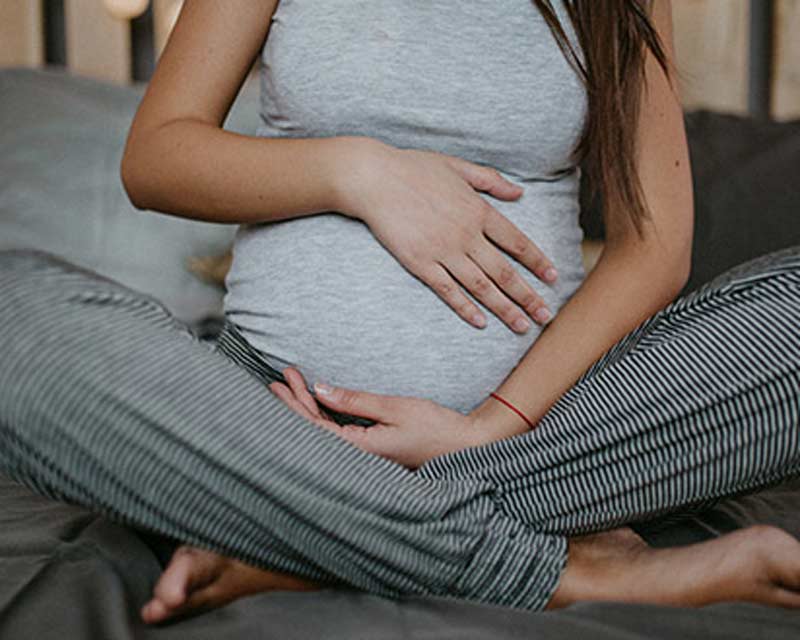
Researchers take next steps to understand COVID-19’s impact on people infected during pregnancy
 The pandemic has led to more questions than answers for the management of patients in critical care setting. One topic of debate has been the optimal oxygen saturation (SpO2) target for pregnant individuals with severe respiratory failure secondary to COVID-19.
The pandemic has led to more questions than answers for the management of patients in critical care setting. One topic of debate has been the optimal oxygen saturation (SpO2) target for pregnant individuals with severe respiratory failure secondary to COVID-19.
Most professional societies recommend an SpO2 greater than or equal to 95% for this patient population. This exceeds the World Health Organization’s recommendation of maintaining SpO2 ≥ 92-95% and is higher than the widely accepted targets for non-pregnant individuals. It’s also challenging to maintain in many patients.
Some physicians wonder if the target can be expanded safely. Last fall, two maternal fetal medicine (MFM) specialists Kara Rood, MD, MFM fellow Joe Eid, MD, and other colleagues in MFM and anesthesia-critical care at The Ohio State University Wexner Medical Center reviewed the literature supporting the ≥95% SpO2 recommendation. Their discoveries became the basis for a paper that urges physicians to consider a lower SpO2 target in pregnant individuals with COVID-19. We talked to Rood and Eid about their work, which will be published in the American Journal of Obstetrics & Gynecology, a leading journal for obstetrics and gynecology.
Rood: Yes, but the issue came to the forefront when we began seeing pregnant individuals becoming more critically ill during the delta-caused wave of COVID-19 last fall. Maternal fetal medicine and critical care specialists around the country engaged in discussions and shared data online to establish best practices. We wondered whether there was good evidence to support the ≥95% SpO2 threshold in pregnant individuals with COVID-19. Our team decided to dig into it. We took a collaborative approach, inviting a critical care anesthesiologist colleague to join us.
Eid: It has to do with the severity of the disease. Practice guidelines for acutely ill patients, including COVID-19 patients, do not recommend administrating supplemental oxygen above 96% as it may lead to worse outcomes. Titrating supplemental oxygen to achieve a minimum target of 95% and avoiding SpO2 >96% is extremely challenging in this patient population. It may require escalation of care to invasive interventions such as endotracheal intubation with mechanical ventilation and potentially ECMO [extracorporeal membrane oxygenation]. These measures can be associated with maternal and fetal risks, including fetal heart decelerations, emergent delivery by cesarean section, and preterm delivery at very early gestational age. All this can add additional morbidity to the mother on top of her acute respiratory failure secondary to COVID-19 without clear benefit to the mother or her fetus.
Rood: There are no published trials or clinical studies demonstrating that a SpO2 at or above 95% is necessary for pregnant individuals to maintain adequate fetal oxygenation. In the absence of strong data and in the setting of reassuring fetal status, we propose maintaining maternal oxygen saturation between 92-96% for admitted patients with acute respiratory failure requiring supplemental oxygen. This is a similar target for non-pregnant people.
Eid: It is essential to individualize the care of pregnant individuals with acute respiratory distress and take into consideration the maternal clinical status and fetal well-being in the setting of the gestational age. Pregnant individuals with a SpO2 below 95 should be evaluated promptly and considered for inpatient admission. But SpO2 is just one parameter. Fetal heart rate monitoring can be used as an additional “vital sign” that may help manage the maternal condition and guide the decision to move toward more invasive interventions if needed.
Rood: We hope this will lead to future studies that can determine more definitely the optimal oxygen targets in pregnant individuals with or without COVID-19.